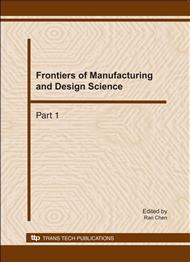p.2950
p.2954
p.2958
p.2963
p.2968
p.2973
p.2978
p.2983
p.2988
Experimental Study on Hysteresis Nonlinearity of Piezoelectric Actuator
Abstract:
In recent years, piezoelectric actuator is being widely used in vibration suppression and micro positioning applications for its fast response, nanometer resolution, no backlash, no friction and bigger driving force. However, its inherent hysteresis nonlinear characteristics between the input voltage and output displacement limit its control accuracy. To optimize the performance of piezoelectric actuator, it is essential to understand the hysteresis nonlinear behavior. In this work, the hysteresis nonlinear behavior was studied by experiment; the dependence of output characteristics on voltage under different electric field conditions in piezoelectric actuator was discussed. It was found that the input method and frequency of loading voltage has a great effect on the hysteresis nonlinearity of piezoelectric actuator. At last, some different hysteresis nonlinear models were introduced.
Info:
Periodical:
Pages:
2968-2972
Citation:
Online since:
December 2010
Authors:
Keywords:
Price:
Сopyright:
© 2011 Trans Tech Publications Ltd. All Rights Reserved
Share:
Citation:


